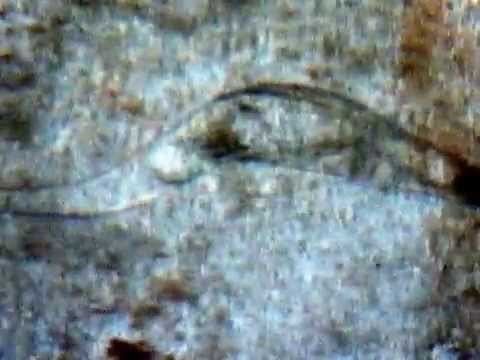Kingdom Animalia Order Strigeidida Scientific name Schistosoma nasale | Phylum Platyhelminthes Subclass Digenea Rank Species | |
 | ||
Similar | ||
Schistosoma nasale from nasal scrapings of cow
Schistosoma nasale is a species of digenetic trematode in the family Schistosomatidae.
Contents
- Schistosoma nasale from nasal scrapings of cow
- Snoring disease in cattle schistosoma nasale
- References
Schistosoma nasale was identified in 1933 by Dr. Maharaj Anant Narayanan Rao, GMVC (1875–1940) at Madras Veterinary College, Tamil Nadu, India, as a causative agent for "snoring disease" in cattle.
The first intermediate host is a freshwater snail Indoplanorbis exustus that may be the sole natural intermediate host for Schistosoma nasale (and other two Schistosoma species) on the Indian sub-continent. Earlier, other snails are also implicated in transmission of Schistosoma nasale as the first intermediate host and they include: Lymnaea luteola and Lymnaea acuminata but experimental work of Dutt and Srivastava (1962) conclusively proved Indoplanorbis exustus as the sole intermediate host of S. nasale.
Schistosoma nasale inhabits blood vessels of the nasal mucosa and causes "snoring disease" in cattle. and remains symptomless in buffaloes though extruding its eggs in nasal discharge.
The clinical symptoms in cattle include a cauliflower-like growth or granuloma in the nasal cavity, associated with a "snoring" sound and profuse mucopurulent dischargeTemplate:Rao 1933). In the endemic areas, there are some local cattle which remain negative for S. nasale eggs, others excrete eggs but without exhibiting symptoms, while a large number exhibit symptoms with presence of the eggs in nasal discharge (Agrawal MC 2012 Schistosomes and schistosomiasis in South Asia. Springer (India) Pvt Ltd, New Delhi). A different form of nasal schistosomiasis where local cattle are negative for Schistosoma nasale but local buffaloes carry it without showing any symptoms has been shown to exist at Jabalpur, Madhya Pradesh; there, cross-bred cattle exhibit snoring disease symptoms with eggs in their nasal discharge (Banerjee PS and Agrawal MC 1991. Prevalence of Schistosoma nasale Rao 1933 at Jabalpur. Indian Journal of Animal Sciences 61:789-791). Anthiomaline was the drug of choice, but this leads to relapse of the symptoms after two months of the treatment. Praziquantel proved better than any other drug but at present it costs Rs 1500 per animal as treatment cost. Recently, Dr. M. C. Agrawal has successfully treated cases of nasal schistosomiasis by administering triclabendazole at a dosage of 20 mg/kg body weight which appears a better alternative looking to cost of the treatment. Nevertheless, there are all chances of killing susceptible blood flukes by these less effective drugs resulting in existence of more resistant schistosome population in future generations causing more problems (Agrawal 2012).schistosoma nasale eggs are boomerang or palaquine shaped.
